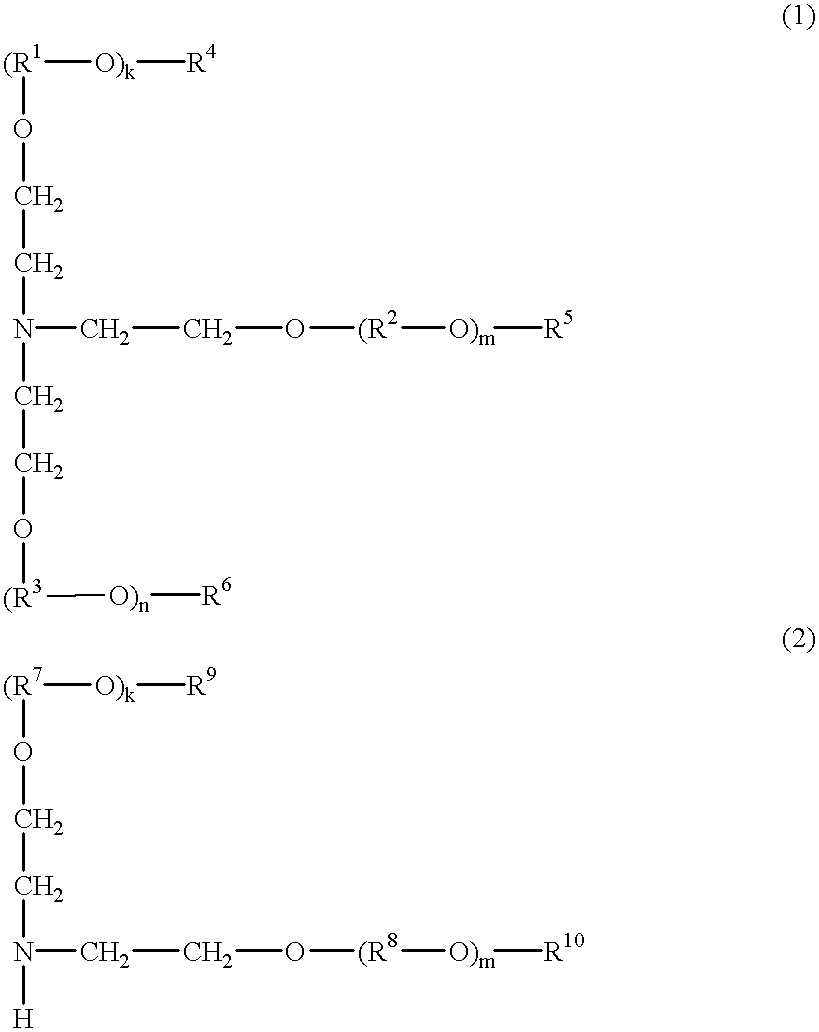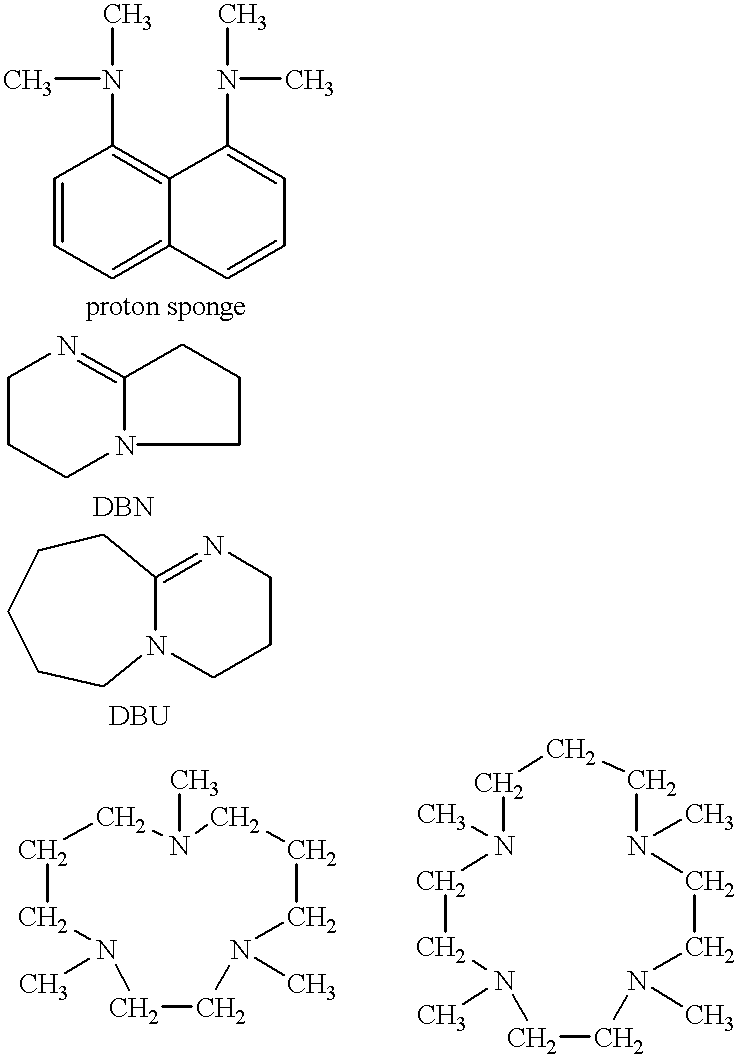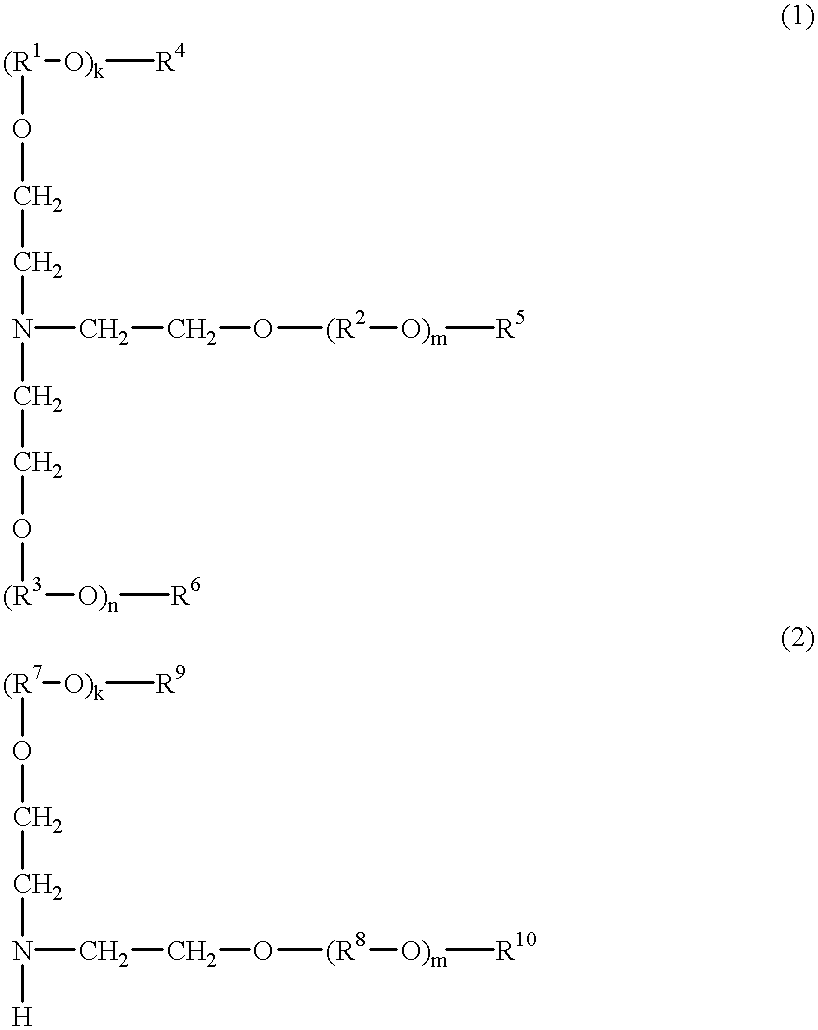Resist compositions
a composition and resist material technology, applied in the field of resist compositions, can solve the problems of ped problem, and pattern thickening at the top, and reducing the dimension of lines to be l
- Summary
- Abstract
- Description
- Claims
- Application Information
AI Technical Summary
Problems solved by technology
Method used
Image
Examples
synthetic example 1
tris(2-methoxymethoxyethyl)amine
To a suspension of 270.6 grams of potassium t-butoxide in 1,800 ml of tetrahydrofuran, 100.0 grams of triethanolamine in 200 ml of tetrahydrofuran was added dropwise over 10 minutes while stirring under ice cooling. After 40 minutes of stirring, 194.5 grams of chloromethyl methyl ether was added dropwise over 30 minutes while continuing stirring under ice cooling. After 30 minutes of stirring, 75.2 grams of potassium t-butoxide was added while continuing stirring under ice cooling. After 20 minutes of stirring, 54.0 grams of chloromethyl methyl ether was added dropwise over 10 minutes while continuing stirring under ice cooling. After 40 minutes of stirring, 500 ml of methanol was added. After 30 minutes of stirring, the reaction solution was filtered with a sufficient amount of Celite, and the residue was washed with ether. The filtrate was concentrated under vacuum, and the resulting oily matter was distilled under vacuum. On analysis by .sup.1 H-NM...
synthetic example 2
tris[2-(2-methoxyethoxy)methoxyethyl]amine
To a suspension of 135.3 grams of potassium t-butoxide in 900 ml of tetrahydrofuran, 50.0 grams of triethanolamine in 100 ml of tetrahydrofuran was added dropwise over 10 minutes while stirring under ice cooling. After 40 minutes of stirring, 150.4 grams of chloromethyl 2-methoxyethyl ether was added dropwise over 30 minutes while continuing stirring under ice cooling. After 30 minutes of stirring, 37.6 grams of potassium t-butoxide was added while continuing stirring under ice cooling. After 20 minutes of stirring, 41.8 grams of chloromethyl (2-methoxyethoxy)methyl ether was added dropwise over 10 minutes while continuing stirring under ice cooling. After 40 minutes of stirring, 250 ml of methanol was added. After 30 minutes of stirring, the reaction solution was filtered with a sufficient amount of Celite, and the residue was washed with ether. The filtrate was concentrated under vacuum, and the resulting oily matter was dissolved in 2,000...
PUM
| Property | Measurement | Unit |
|---|---|---|
| mol % | aaaaa | aaaaa |
| pKa | aaaaa | aaaaa |
| mol % | aaaaa | aaaaa |
Abstract
Description
Claims
Application Information
 Login to View More
Login to View More - R&D
- Intellectual Property
- Life Sciences
- Materials
- Tech Scout
- Unparalleled Data Quality
- Higher Quality Content
- 60% Fewer Hallucinations
Browse by: Latest US Patents, China's latest patents, Technical Efficacy Thesaurus, Application Domain, Technology Topic, Popular Technical Reports.
© 2025 PatSnap. All rights reserved.Legal|Privacy policy|Modern Slavery Act Transparency Statement|Sitemap|About US| Contact US: help@patsnap.com



